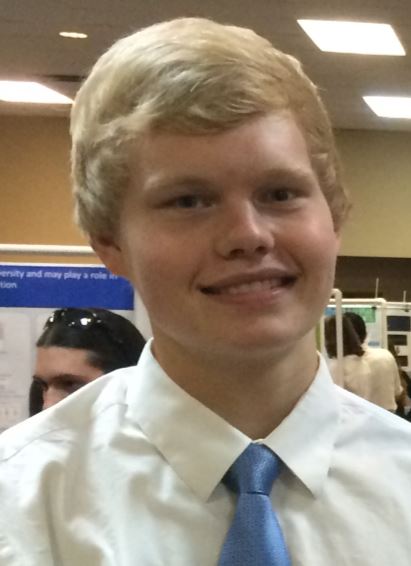Below is a summary of the abstract you submitted. Presenting author(s) is shown in bold.
If any changes need to be made, you can modify the abstract or change the authors.
You can also download a .docx version of this abstract.
If there are any problems, please email Dan at dar78@pitt.edu and he'll take care of them!
This abstract was last modified on May 9, 2016 at 8:04 p.m..

In fall 2015, 26 mycobacteriophages were isolated in East Texas at LeTourneau University. Genomic sequencing of six phage genomes revealed wide diversity, with sizes ranging from 41903 to 61041bp including between 60 and 100 protein-coding genes. Phages WunderPhul and Gideon were chosen for further characterization.
Investigation of WunderPhul revealed two consecutive genes bearing homology to the immunity repressor gene present in other A6 phages. The gene structure in WunderPhul would result in production of two truncated immunity repressor proteins; one lacking the C-terminus and a second lacking the N-terminus. When considered together as one gene, these reveal a more complete homology with other phages. However, the genes are separated by a premature TGA stop codon which appears to have resulted from a C-T transition point mutation. We hypothesize the introduced stop codon would inhibit immunity to superinfection.
WunderPhul is the shortest of all identified A6 phages at 48724bp. The second shortest A6 phage, Jeffabunny, is 48963bp. The genomes of all other A6 phages are between 50341bp and 52879bp. BLASTN analysis revealed the WunderPhul genome is most similar to phage Zaka with a significantly larger genome at 52122bp. Analysis showed that WunderPhul has genes in the same phams as genes 89 and 102 in Zaka, but genes 90-101 in Zaka had no equivalent phams in WunderPhul. These 12 missing genes in WunderPhul encompass 2202bp, equal to 65% of its size difference. Further analysis also indicates the 12 genes are present in the same location in all other A6 phages. While the uniqueness of WunderPhul exemplifies the mosaicism of phage genomes, the strategies used to annotate these genomes are also changing. During the annotation of Phage Gideon improvements in how particular genes are called became apparent. A chronological shift in annotation methods was observed when newer methods favoring certain annotation guiding principles over others occurred.
Recent shifts favor the selection of operons and the ribosome-preferred 4 base pair start-stop codon overlaps of genes instead of the longest possible reading frames and excluding putative genes for being smaller in size. In annotations prior to 2012, entire upstream or downstream genes were discounted in favor of the longest open reading frame. In more recent annotations, from 2012 on, genes in Gideon and other members of the G1 subcluster form an 8-gene operon, comprised of genes 48 through 55 in Gideon. Older methods broke up this operon by excluding the small gene 52 and extending gene 53 upstream, leaving a 1 base pair gap following gene 51. The older annotations were called between 2006 and 2011.
In order to reduce future confusion, it is important to reference genomes annotated since 2012 according to the current methods and guiding principles. Comparison of newly sequenced genomes to multiple recent genomes is important so inconsistencies can be identified and eliminated.


